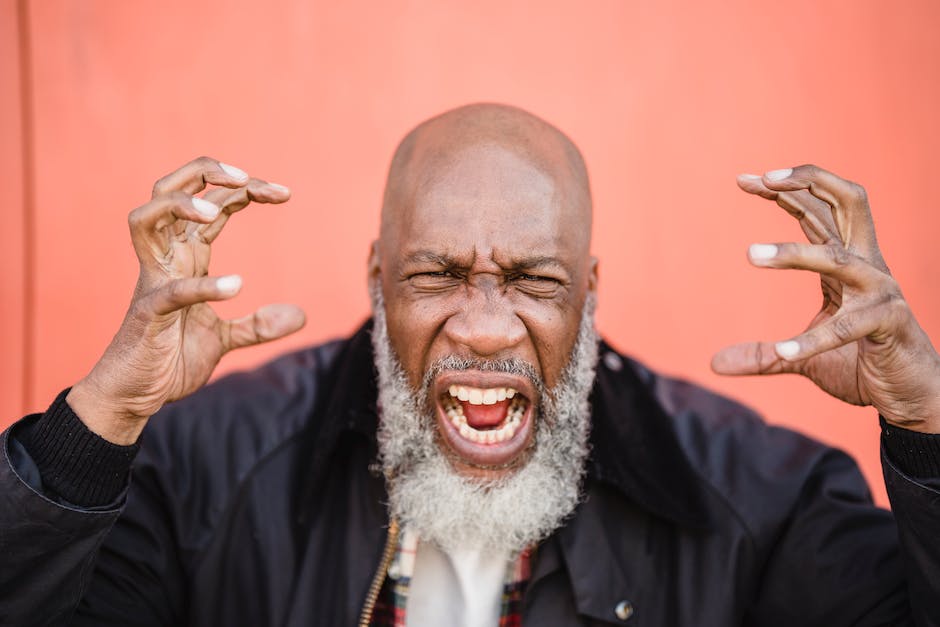Contents
Defining Agony Advertising
Agony advertising seeks to gain the attention of consumers by playing off their negative emotions — specifically discomfort, anxiety, fear, or depression. It presents a certain problem or challenge that the target audience likely connects to and then it highlights the stress, discomfort or agony over the issue.
Agony advertising doesn’t spell doom and gloom. It is not about pushing your audience into despair. The key here is that it uses these negative undertones to then emphasize the relief or solution the product or service provides.
The Theory Behind the Practice
Agony advertising operates on two core psychological concepts:
- the focus on pain points to attract attention and
- the relief theory of laughter.
The latter is a psychological theory suggesting that laughter arises when tension, fear or discomfort is followed by a moment of relief. Just like in a suspense-filled movie, the climax of fear is often followed by moments of laughter or sighs of relief.
How does that apply to agony advertising? The advertising narrative first attracts the audience by highlighting a commonly experienced discomfort or pain (agony). It then swiftly presents the product or service as the solution (relief) to this pain.
Agony Advertising in Action
Now, let’s consider a few examples to illustrate how agony advertising works:
- A toothpaste commercial that first shows someone wincing in pain with a toothache, and then switches to them smiling and eating ice cream after using the advertised toothpaste.
- A home security system advertisement that first talks about the fear of house burglaries, then shows the relief and peace of mind homeowners have after installing the security system.
In both cases, the initial scenario taps into a shared fear or discomfort (the agony), and the product or service is presented as the lifesaver, offering the relief.
The Key to Successful Agony Advertising
The goal of agony advertising isn’t to exploit the audience’s fear or discomfort but rather to emphasize that your product or service offers a solution to these feelings.
Here are a couple of pointers to keep in mind:
- The agony should be relatable and real: To ensure your advertising strategy does not backfire, the problem you present must be one your target audience can relate to.
- Balance is essential: Just as too much positivity in advertising can be off-putting, so can an overload of negativity. Strike a balance to ensure your message doesn’t come across as overly gloomy.
- Show the Product as the Hero: After laying out the problem, ensure your product is portrayed convincingly as the solution.
At the end of the day, while agony advertising might seem a little paradoxical, it simply taps into the core of human nature: the instinct for self-preservation. Everyone seeks a solution to existing problems, but first, they must acknowledge the problem. That’s the power of agony advertising – it brings the problem into the spotlight, and then provides the solution.

Crafting Agony Advertising
Choosing the Elements for Agony Advertising
Now that we’ve dug into what agony advertising is (a strategic ploy to use emotions to lure consumers), let’s go even deeper and review the elements that make up successful agony advertising campaigns.
1. Crafting the Agony Story
The masterstroke in agony advertising consists of crafting a story that touches the right chords with your audience. It’s not about throwing in random sad elements and hoping for the best – a well-crafted story has a clear problem and a clear solution.
Anguish, struggle, disappointment – these are all elements of an agony story. But remember, you also need to weave in threads of hope, resolution, and triumph.
For instance, a laundry detergent brand may portray a busy mom struggling with stains that won’t go away. The brand presents the detergent as the noble hero, rescuing the mother from her struggle.
2. Visceral Visuals
We are visual creatures, and images speak louder than words. Incorporating powerful visuals that signify the struggle and the ensuing release can create a lasting impression. People tend to remember what they see more than what they hear or read, making visuals an essential part of the recipe.
The mother wrestling with stubborn stains or the office worker looking despondently at his lukewarm lunch. Such visuals create an immediate and deep-seated connection with the audience.
3. Real Characters
Characters that viewers can relate with boost the authenticity of the campaign. Relay the pain through characters that your target audience can identify with. They need to think, “Hey, that could be me!” That connection acts as a powerful draw that reels in the audience and sticks the product in their minds.
4. Evocative Language
Choice of words is critical. Language in agony advertising needs to stir emotions and evoke empathy. Casual, everyday dialogue tends to be more relatable than polished, formal language. People are more likely to engage with campaigns when the language feels genuine, like it’s from a friend rather than a sales agent.
Key Marketing Theories for Agony Advertising
We see a couple of key marketing theories at play here that nicely complement agony advertising.
- Social Identity Theory: We humans tend to categorize ourselves into different social classes. Advertisers can heighten the impact of agony advertising by linking the pain/problem with a specific group that the target audience identifies with (think peer group, socioeconomic class, etc.)
- Loss Aversion Theory: People hate losing more than they love winning. Agony advertising taps into that fear of loss. The ad portrays the pain of a problem and subtly communicates that not using the product is a loss.
- Elaboration Likelihood Model (ELM): ELM proposes that persuasion occurs in two ways – the central route (logic and quality of arguments) and the peripheral route (emotional cues). Agony advertising leans heavily on the peripheral route to persuade the target audience.
As you build your understanding of agony advertising, remember that this method is about offering solutions, not exploiting emotions. The aim is to foster a connection between the brand and the consumer by communicating that the brand understands their struggles and has a solution. It’s about pain, yes, but more importantly, it’s about empowerment, resolution, and triumph.

Ethics surrounding Agony Advertising
There’s no denying that agony advertising can be a powerful tool. By stirring up emotions, it can motivate audiences to take actions, be it buying a product or supporting a cause. However, this prompts a crucial question – is it right to exploit someone’s distress or hardship for commercial gain?
Balancing Pros and Cons
Critics argue that agony advertising manipulates emotional responses and might reinforce negative stereotypes or stigmas. For instance, charity ads may perpetuate harmful misconceptions about the less fortunate, leading to pity rather than empowerment.
On the other hand, proponents believe that if done right, marketers can raise awareness on vital issues. For example, public health campaigns often use agony advertising to emphasize the dangers of smoking, fast food, or lack of exercise. In such cases, the ends may justify the means.
Striking the Right Note
Given these divergent views, it’s essential to strike the appropriate balance. Advertisers need to ensure that their campaigns:
- Are authentic, accurate, and respectful to those represented in the ads?
- Do not exaggerate or falsify the agony simply for effect?
- Serve a beneficial purpose beyond just marketing a product or service?
Key Takeaways
- An agony ad serves two core purposes: a solution to a problem and a connection with the audience.
- It pacifies the portrayed ‘agony’ with the advertised product and fosters a sense of understanding, relatability, and connection between the company and its audience.
- Agony advertising is powerful for its emotion-driven, problem-solution storyline.
- It neurologically engages viewers, provides a relatable context, and seizes their attention, making it a popular and potent tool in the world of marketing.
What is Agony Advertising?
Agony advertising focuses on the difficulties or pain points of the target audience, emphasizing how the advertised product or service can alleviate these issues.
How Does Agony Advertising Differ from Traditional Advertising?
Unlike traditional advertising, which often highlights the positive aspects or benefits of a product, agony advertising starts by focusing on negative issues or problems faced by consumers, positioning the product as a solution.
FAQs
Why Do Marketers Use Agony Advertising?
It effectively captures attention by resonating with the audience’s struggles, creating a strong emotional connection, and demonstrating empathy and understanding of their needs.
Can Agony Advertising be Considered Manipulative?
It can be seen as manipulative if it exploits consumers’ fears or insecurities excessively. Ethical practice requires balancing the portrayal of problems with honest, helpful solutions.
What Types of Products or Services Benefit Most from Agony Advertising?
Products or services that solve specific problems, like pain relievers, skincare solutions, or services that ease daily hassles, are well-suited for this approach.
How is Agony Advertising Implemented in a Campaign?
It starts by highlighting a common problem or pain point, often using storytelling or real-life scenarios, and then introduces the product as an effective solution.
What are the Risks Associated with Agony Advertising?
If overdone, it can alienate consumers or seem insincere. There’s also a risk of focusing too much on the problem and not enough on the product benefits.
How Does Agony Advertising Influence Consumer Behavior?
By highlighting relatable problems, it can create a sense of urgency and need, prompting consumers to consider the product as a necessary solution.
Can Agony Advertising be Used in Digital Marketing?
Yes, it’s effective in digital formats like social media, where personalized content can directly address specific audience pain points.
How Do Marketers Ensure Agony Advertising is Effective and Not Off-putting?
They balance the portrayal of the problem with positive messaging about the solution, ensure the scenarios are relatable and not exaggerated, and focus on genuine empathy rather than fear-mongering.
